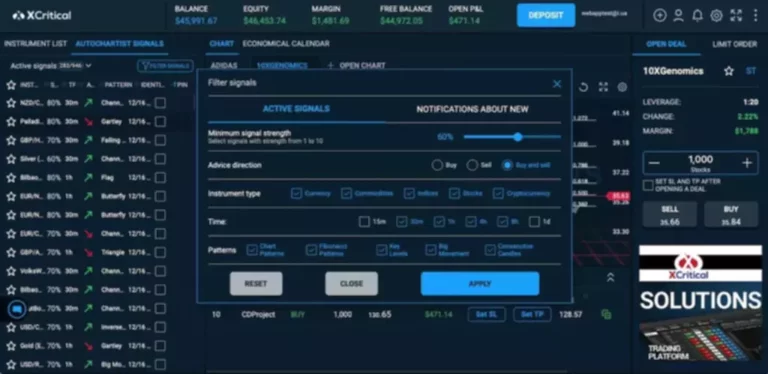The Merge Is Right Here: Ethereum Has Switched To Proof Of Stake
It differs from proof-of-work considerably, primarily in the reality that it incentivizes sincere behavior by rewarding those who put their crypto up as collateral for a chance to earn more. The committee has a time frame in which to propose and validate a shard block. After every epoch, the committee is disbanded and reformed with different, random members.
PoS brings several advantages that align nicely with the rules and functionalities of DeFi. In this blog post, we will elaborate on Ethereum’s transition to PoS & its broader implications for the DeFi house. With the recent Merge now complete after years of labor, Ethereum’s transition to Proof of Stake is now lively. But the method as a whole is not complete, so its full impact remains to be not seen. The following offers an end-to-end clarification of how a transaction will get executed in Ethereum proof-of-stake.
In exchange, they get an opportunity to validate new transactions and earn a reward. But in the occasion that they improperly validate dangerous or fraudulent data, they could lose some or all of their stake as a penalty. In a PoS system, validators are chosen to create blocks and validate transactions primarily based on their stake, which represents their ownership of the cryptocurrency. The more cryptocurrency a validator holds and is prepared to lock up as collateral, the higher their probabilities of being selected as a validator.
Aioz Community
This validator is answerable for creating a model new block and sending it out to different nodes on the community. Also in every slot, a committee of validators is randomly chosen, whose votes are used to discover out the validity of the block being proposed. Dividing the validator arrange into committees is necessary for keeping the community load manageable. Committees divide up the validator set so that each lively validator attests in every epoch, but not in each slot.

Users can take part in staking rewards while simultaneously leveraging their staked ETH as collateral for borrowing or offering liquidity. This innovation has unlocked new alternatives for users to generate further revenue and liquidity whereas actively taking part in staking. MEV refers to the potential profit that may be extracted from reordering, front-running, or executing transactions in a particular order to use value differences or gain an advantage. Validators can have interaction in MEV methods to seize additional value from the Ethereum network.
To do that in proof-of-stake, Casper, a finality protocol, will get validators to agree on the state of a block at certain checkpoints. Validators will lose their complete stake in the event that they attempt to revert this later on via a 51% assault. Miners use highly effective computer systems that remedy complicated maths puzzles and update the blockchain, earning new crypto tokens. While this makes records on the blockchain safe, it’s highly energy-intensive. Proof of stake, first proposed on an internet forum known as BitcoinTalk on July 11, 2011, has been one of the more well-liked alternatives.
Most different security features of PoS usually are not advertised, as this might create a chance to avoid security measures. However, most PoS systems have additional safety features in place that add to the inherent safety behind blockchains and PoS mechanisms. Proof-of-stake is designed to scale back network congestion and handle environmental sustainability issues surrounding the proof-of-work (PoW) protocol. Proof-of-work is a competitive strategy to verifying transactions, which naturally encourages people to search for methods to realize a bonus, particularly since monetary worth is involved. In distributed networks, a transaction has “finality” when it’s part of a block that can’t change. “The swap from proof of work to proof of stake [will] reduce overall power consumption of Ethereum by 99.9% or more,” Ethereum core developer Preston Van Loon recently informed Fortune.
Marinade Staked Sol
Rather than competing via computational work, validators take turns proposing and voting on blocks based on their staked quantity, making a more energy-efficient and scalable network. The “work” in proof of labor comes in the form of mining, where miners expend power in the type of computing energy to add blocks to the blockchain by validating transactions. Though its supporters love proof of work, saying it’s the most safe mechanism, the process is notably dangerous for the environment—a key think about prompting Ethereum’s shift to proof of stake. Proof-of-stake reduces the quantity of computational work wanted to verify blocks and transactions. Under proof-of-work, hefty computing requirements kept the blockchain secure.
- Their consensus consumer requests a bundle of transactions as an ‘execution payload’ from their paired execution client.
- Once there’s a crosslink, the validator who proposed the block gets their reward.
- The term ‘consensus mechanism’ is often used colloquially to check with ‘proof-of-stake’, ‘proof-of-work’ or ‘proof-of-authority’ protocols.
- These delegates take turns producing blocks, and their voting power is proportional to the number of tokens held.
- Finality guarantees that a particular block within the blockchain cannot be modified or reversed.
Liquid staking derivatives (LSDs) and staking swimming pools have emerged as different options. LSDs could go properly with individuals who need to take part in Ethereum staking however may not have the technical experience or minimal stake necessities. Liquid staking derivatives enable customers to trade their staked ETH for liquid tokens that can be transferred or traded freely. Validators start by verifying the integrity and validity of the block header. They check the previous block’s hash, the timestamp, and the problem degree to guarantee that the block adheres to the community’s rules and protocols.
What Is Slashing In Ethereum?
The winner shares the model new block with the remainder of the network and earns some freshly minted ETH. The race is won by the pc which is able to clear up a math puzzle fastest. This produces the cryptographic link between the present block and the block that went before. The canonical chain is then determined by a fork-choice rule that selects the set of blocks which https://www.xcritical.in/ have had probably the most work accomplished to mine them. The term consensus mechanism refers back to the complete stack of protocols, incentives and concepts that enable a network of nodes to agree on the state of a blockchain.

Validators must switch their ETH into the Ethereum 2.0 deposit contract, locking it up as collateral for the staking course of. By doing so, validators sign their dedication to securing the community and participating in consensus. Both PoW and PoS are forms of consensus mechanisms that permit cryptocurrency networks to function with no central governing authority. But they obtain this in several ways and have various levels of safety and reliability. Slashing is a disciplinary system used by PoS protocols to penalize validators for any harmful or irresponsible behaviors. This usually involves the network deducting some of their safety deposit (their preliminary staked coins).
What Happened In The Merge?
Proof of Stake (PoS) is a consensus mechanism used in blockchain networks to attain distributed consensus and safe transactions with out relying on energy-intensive mining processes. One validator is randomly selected in each slot to be the block proposer. Their consensus shopper requests a bundle of transactions as an ‘execution payload’ from their paired execution client.
Proof of Activity (PoA) is utilized by Decred, combining elements of both PoW and PoS. PoA requires members to solve a cryptographic puzzle as proof of labor and then stake their cash as proof of stake. This hybrid approach aims to provide security through PoW while granting decision-making energy to stakeholders by way of PoS. The advantages of PoS embrace lowered power consumption compared to PoW, because it eliminates the necessity for resource-intensive mining operations. PoS systems usually present faster transaction affirmation times and elevated scalability, making them well-suited for networks with excessive transaction volumes.
This consensus verification course of includes confirming that the block has been proposed by a valid validator and that the proposed block follows the consensus rules. Validators execute the transactions within the proposed block to validate the ensuing state transition. This involves applying the transactions to the current state of the Ethereum Virtual Machine (EVM) and checking for any inconsistencies or conflicts. Validators also interact in attestation, which includes testifying to the validity of proposed blocks. They present their digital signatures to verify that a proposed block is legitimate and may be added to the blockchain. Another consensus mechanism is Proof-of-Space-Time (PoST), implemented by Chia Network.
Are You Able To Mine Proof-of-stake Coins?
For securing the community, validators post-merge will earn Ether as reward. Validators propose and validate new blocks in the Ethereum blockchain. When a validator successfully proposes a block, they are rewarded with extra ETH as an incentive for his or her lively participation in sustaining community safety.
Google even created a countdown clock featuring white and black bears, a nod to a meme concerning the occasion. Its creator wanted to do away with the control that third events, typically huge banks or states, exerted over financial systems. Of course, Ethereum’s move to proof of stake has been six months away for years now. “[We thought] it would take one 12 months to [implement] POS … but it actually [has] taken around six years,” Ethereum’s founder, Vitalik Buterin, advised Fortune in May 2021. Generally talking, consensus is a course of used to achieve an settlement amongst a group of individuals. Overall, proof-of-stake, as it is applied on Ethereum, has been demonstrated to be extra economically safe than proof-of-work.
This strategy incentivized validators to carry their cash longer, promoting network stability and discouraging malicious conduct. Understanding Ethereum’s Proof of Stake consensus mechanism will allow you Ethereum Proof of Stake Model to make informed decisions about interacting with the blockchain. Unraveling the complicated yet powerful consensus mechanism securing the behemoth blockchain that’s Ethereum.
Ethereum uses 113 terawatt-hours per year—as a lot power as the Netherlands, according to Digiconomist. A single Ethereum transaction can eat as much energy as a mean US household makes use of in additional than every week. Validators attest to the validity of the proposed block by providing their digital signatures.
